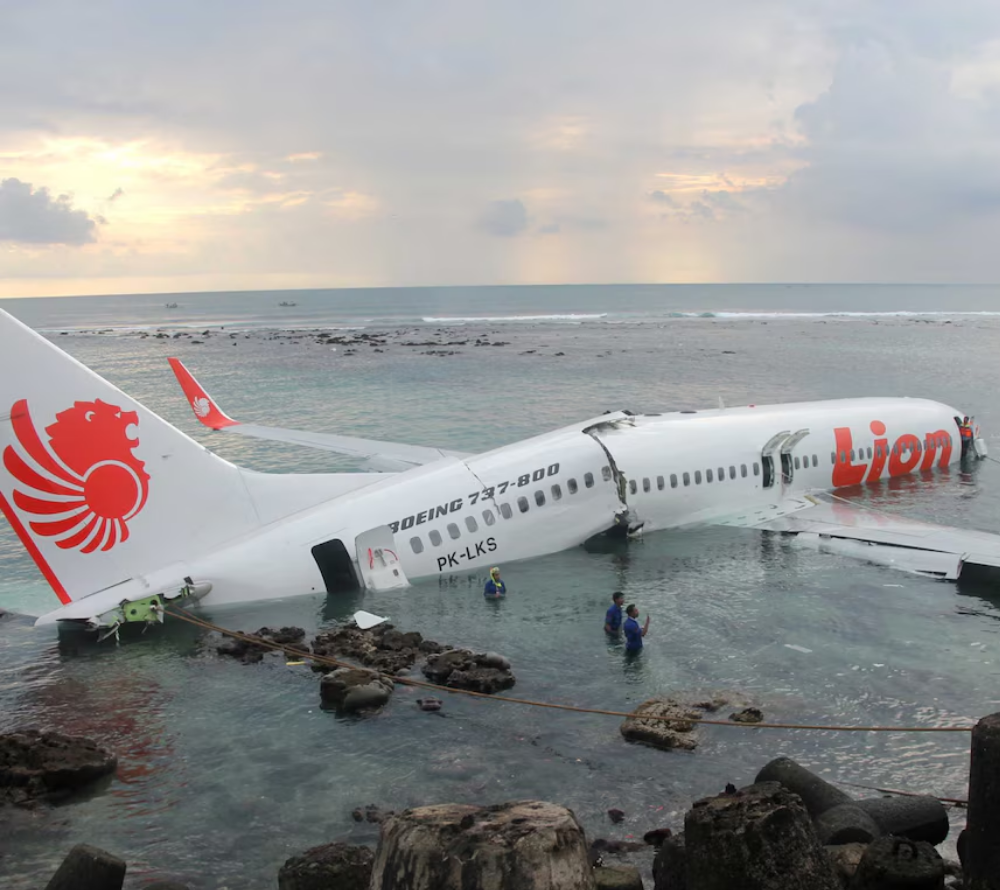Introduction
Between October 2018 and March 2019, two Boeing 737 MAX aircraft crashed just minutes after takeoff, killing a total of 346 people. Lion Air Flight 610 went down in the Java Sea off Indonesia, and Ethiopian Airlines Flight 302 crashed near Addis Ababa, Ethiopia.
Both disasters were linked to the Maneuvering Characteristics Augmentation System (MCAS), a new flight-control software installed on the 737 MAX to improve handling. Faulty sensor data repeatedly triggered MCAS, forcing the nose of the aircraft down. Pilots struggled to counteract it, but the system overpowered their efforts, sending both jets into fatal dives.
The Maneuvering Characteristics Augmentation System (MCAS) was a new flight-control software added to the 737 MAX to make the plane handle more like older 737 models. It automatically pushed the nose down if sensors detected the aircraft climbing too steeply, helping prevent a stall. However, it relied on a single sensor, and if that sensor failed—as it did in both crashes—MCAS could activate by mistake and dangerously force the plane downward.
The twin tragedies grounded the global 737 MAX fleet for nearly two years and triggered one of the most significant aviation crises in modern history.
What Went Wrong
1. Faulty sensor input
MCAS relied on a single angle-of-attack (AoA) sensor to determine if the plane’s nose was too high. In both accidents, this sensor malfunctioned, sending incorrect data that activated MCAS unnecessarily.
2. Aggressive automation
When triggered, MCAS pushed the nose of the plane down repeatedly. The system had far more authority over the flight controls than originally disclosed, making it extremely difficult for pilots to override.
3. Inadequate pilot training
Many pilots were not informed about the existence of MCAS, nor trained on how to disable it in an emergency. Boeing marketed the MAX as requiring minimal differences training compared to older 737 models, leaving crews unprepared for this scenario.
4. Explosive decompression
Boeing failed to fully disclose the risks of MCAS to airlines, pilots, and regulators. The FAA also relied heavily on Boeing’s own assessments, which downplayed the hazards. This lack of transparency contributed directly to the accidents.
Consequences
• 346 lives lost: 189 on Lion Air 610 and 157 on Ethiopian 302.
• Global grounding: The entire 737 MAX fleet was grounded worldwide for 20 months—the longest grounding of a commercial jet in aviation history.
• Massive scrutiny: Boeing faced lawsuits, congressional hearings, and criminal investigations. Its reputation suffered heavily, and billions were lost in compensation and canceled orders.
• FAA reforms: The crashes sparked outrage at the FAA’s certification process, which had allowed Boeing to self-certify many aspects of the MAX.
The disaster led to major changes in aviation safety:
• MCAS redesign: Boeing overhauled the MCAS system to use two sensors instead of one, limited its authority, and made it easier for pilots to counteract.
• Pilot training: All 737 MAX pilots now receive mandatory simulator training on MCAS-related scenarios.
• Regulatory reform: Governments worldwide reviewed how new aircraft are certified, reducing reliance on manufacturer self-approval.
• Cultural change at Boeing: Internal reforms were promised to prioritize safety culture over production speed and cost-cutting.
Conclusion
The 737 MAX crashes exposed deep flaws not just in aircraft design, but also in corporate decision-making and regulatory oversight. They were not caused by pilot error or weather but by a combination of flawed software, poor communication, and systemic failures.
From this tragedy, aviation gained stronger safeguards against automation errors, better pilot training, and stricter certification rules. While the 737 MAX has since returned to service, its legacy is a stark reminder that transparency, training, and safety must always come before profit.
Crashes like Lion Air 610 and Ethiopian 302 are highly unlikely to happen again because MCAS has been completely redesigned. It now uses two sensors, has limited control authority, and cannot repeatedly override the pilots. All 737 MAX pilots now receive specific simulator training on MCAS, ensuring they know how to respond if the system malfunctions. Regulators also tightened aircraft certification rules, making sure new systems are fully tested, transparent, and properly explained to crews. These safeguards mean the exact chain of failures that caused the MAX crashes cannot easily repeat.
